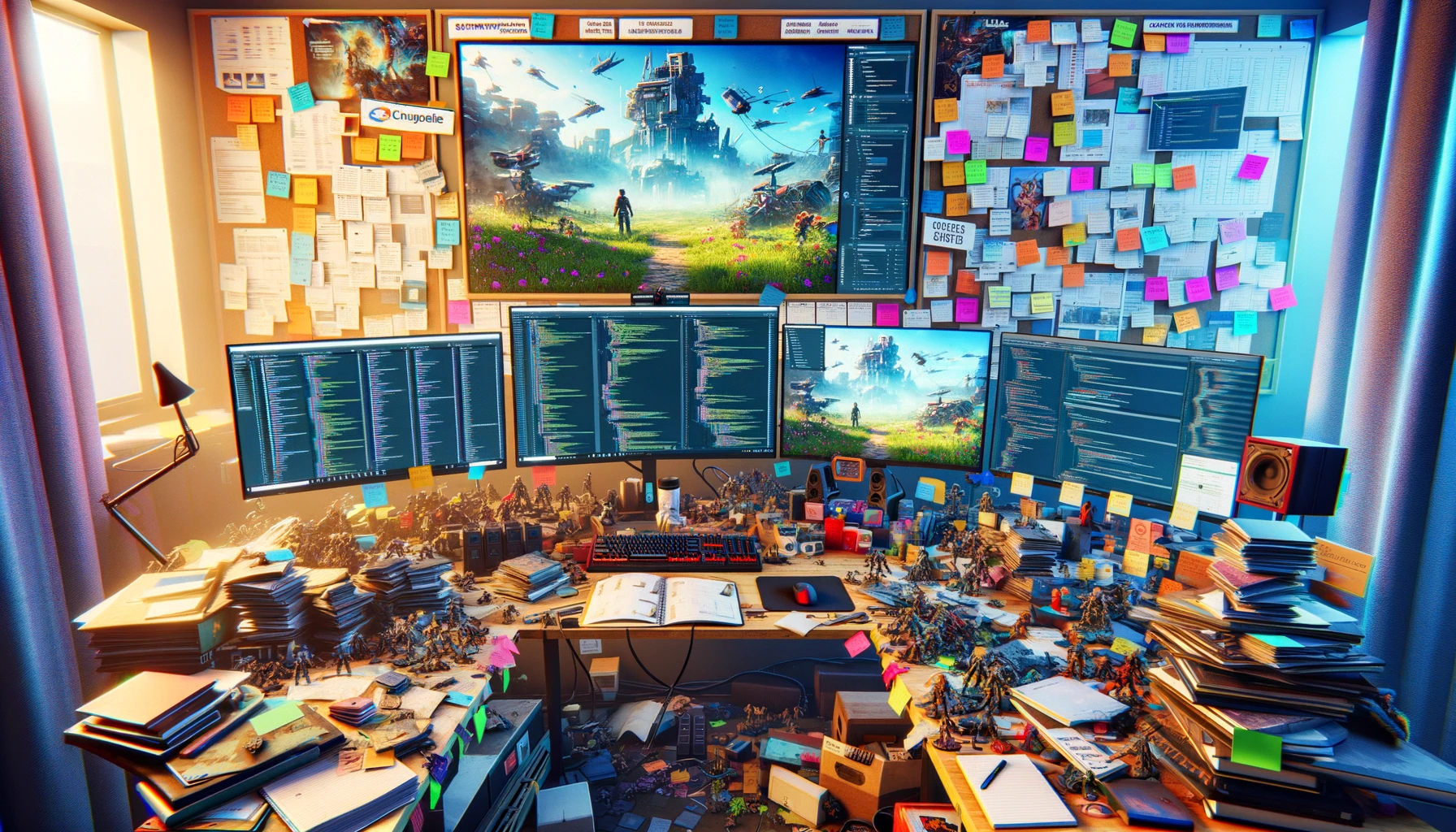In “Chronosynclastic Infundibulum”, player progression will be structured around a mix of narrative advancement, skill enhancement, and rewards that encourage exploration and mastery of game mechanics. Here’s how these elements can be detailed:
Narrative Progression
Players advance through a series of intertwined cases, each escalating in complexity and stakes. Key narrative milestones not only push the story forward but also unlock new areas of the city and different time periods to explore.
- Main Cases: Core missions tied to the overarching plot involving major crimes or mysteries that have significant temporal implications. Solving these cases often results in major narrative revelations and character development.
- Side Quests: Optional missions that can provide deeper insights into the city’s history and the secondary characters’ backgrounds. These quests often involve smaller, personal stories that enrich the world.
Skill Enhancement
As players solve cases and master time manipulation, they gain experience points (XP) which can be used to enhance their detective skills or temporal abilities.
- Time Skills: Enhancements could include increasing the duration or range of time manipulation, or unlocking special abilities like seeing the future outcomes of their choices.
- Detective Skills: Upgrades might improve the player’s ability to gather clues faster, enhance interrogation techniques, or provide technological gadgets for investigation.
Challenges
Challenges in the game are designed to test the player’s problem-solving skills and adaptability to changing scenarios.
- Temporal Anomalies: These are unpredictable events that disrupt the normal flow of time in an area, challenging the player to stabilize or correct the timeline.
- Moral Dilemmas: Players will frequently face decisions that affect the narrative outcome, such as choosing to alter time to prevent a crime at the risk of causing unknown consequences.
- Resource Management: Managing limited resources like “Chrono Energy”, necessary for time manipulation, adding a layer of strategic planning to the gameplay.
Rewards
Rewards are crucial for motivating players and providing a sense of achievement. They come in various forms:
- Equipment and Tech: New gadgets or upgrades that enhance investigative capabilities or offer new ways to interact with the environment.
- Knowledge and Secrets: Unlocking hidden lore about the city and the origins of the Time Wells, which can also lead to discovering new playable areas.
- Reputation and Relationships: Progress in the game improves relationships with NPCs, which can lead to new alliances, support in critical missions, or different endings based on these relationships.
- Achievements and Trophies: Special awards for completing complex puzzles, making significant choices, or achieving exceptional feats like solving a case without using time manipulation.
Special Events
Occasional special events tied to the city’s calendar (like the annual Time Festival) offer unique challenges and rewards, creating dynamic gameplay opportunities outside the main storyline.
This structure ensures that players feel a continuous sense of progression, both in terms of story and character development, as they delve deeper into the mysteries of Chronopolis and master their unique time-manipulative abilities. Would you like to focus more on any particular aspect of the progression system?
